Brown bears are a large species of bear that ranges throughout much of the Northern Hemisphere. They are massive animals, and the only bear species larger than brown bears is polar bears. In fact, brown bears are closely related to polar bears, and share some of the same habitat. Hybrids of these two species are rare, but do occur, especially because many polar bears must roam farther south due to climate change. Read on to learn about the brown bear.
Description of the Brown Bear
There are at least 13 different subspecies of brown bears, some of which have drastically different sizes and colors than the “norm” for this species. Generally, these bears are brown colored with long, thick fur. This color can vary in different subspecies, and some are reddish, silver tinted, yellowish, whitish, cream colored, or dark brown. These bears also vary greatly in size, and can range anywhere from four feet long to nine feet long.
Interesting Facts About the Brown Bear
It’s no secret that these bears can be dangerous. However, we should respect them as well as fear them. Understanding these animals allows humans and bears to coexist peacefully. Learn more about these bears below.
- Variability – Brown bears come in a large range of sizes because they have such a large geographic range. These bears follow Bergmann’s Rule, where animals increase in size as you move farther north in latitude. Scientists believe this is because greater mass allows animals to survive harsher climates.
- Powerful Paws – These bears are big, and that means that their paws and claws are big as well. A brown bear’s curved claws can be nearly four inches long! The feet themselves can be a foot and a half long, though the average is closer to one foot. A single swipe with their strong paws can take down a prey item.
- A Bear’s Bear – The scientific name of this species Ursus arctos literally translates to “bear bear.” Ursus is Latin for “bear” and arctos is Greek for “bear.” It’s possible they wanted to ensure there was no confusion that this animal is, indeed, a bear!
- Food for Thought – Even though nature documentaries love to show brown bears hunting salmon or feeding on elk, these creatures actually derive much of their diet from plants. In some areas, up to 90% of a bear’s food energy can come from vegetable matter. They will eat berries, grasses, acorns, flowers, mushrooms, and a wide variety of other plants.
Habitat of the Brown Bear
Throughout their range, these bears occupy a diverse range of habitats. In fact, no other bear can survive in such a large number of different habitats. They are particularly successful in areas with less human habitation.
Elevation does not impact their habitat choice either, as they roam from sea level to 16,000 feet high. Some popular ecosystems include plains, tundra, coastal estuaries, islands, prairies, mountains, forests, and more.
Distribution of the Brown Bear
Even though these bears have an incredibly wide distribution, humans have eradicated them from much of their historic range. In North America these bears primarily reside in Alaska and Canada, and only small populations persist in the contiguous United States.
Europe has a number of small populations of brown bears. In Asia these bears range throughout much of Russia, and into parts of China, North Korea, Pakistan, India, and Afghanistan.
Diet of the Brown Bear
Brown bears are omnivores, which means that they eat both plants and animals. They are also generalists, which means that they will either eat, or try to eat, a large variety of foods. Exactly what they eat depends on where they live, what season it is, and what food is available. Some bears eat much more plant matter, while others feed on more meat.
They will feed on a variety of plants, including mushrooms, acorns, berries, seeds, fruits, grasses, flowers, roots, bulbs, and more. In addition to plants, insects and other invertebrates can make up a large portion of some bears’ diets. They regularly eat larvae and grubs, beetles, earthworms, bees, wasps, moths, ants, flies, clams, crabs, crayfish, and more. Brown bears also feed on fish, rodents, hoofed mammals (ungulates), birds, and more.
Brown Bear and Human Interaction
Human conflict with brown bears is much less frequent than with black bears, simply because brown bears usually avoid areas with humans. However, brown bears are usually more aggressive than black bears, and interactions are considerably more dangerous. Many aggressive interactions occur either because humans have fed the bears in the location, the bears have found food near humans, or because the bear is protecting cubs.
Never get the in way of a mother bear, or anywhere near her cubs. This is a very dangerous situation! When confronted, never run, and do not fight back against the bear. Protect your neck, head, and vital organs and hope for the best. When travelling in areas with brown bears, carrying bear spray has proven to be the best deterrent to attacks, not guns.
Domestication
Humans have not domesticated brown bears in any way.
Does the Brown Bear Make a Good Pet
No, a massive, dangerous, oftentimes aggressive, animal does not make a good pet. It is also illegal to own a brown bear in most places.
Brown Bear Care
In zoos, brown bears must have sturdy enclosures that they cannot escape from. Escapes are dangerous to the public, the zookeepers, other animals, and to the bear. They are large animals, and thus require a spacious enclosure, preferably with a large water body to swim in.
These bears are also intelligent, and need environmental enrichment, in the form of toys, puzzle feeders, ice blocks, and more. Their diet is similar to that of black bears, and consists of a variety of fruits and vegetables, as well as commercial carnivore meat and other protein sources.
Behavior of the Brown Bear
Depending on the region and potential for human interaction, these bears are either nocturnal or crepuscular. Crepuscular bears are most active early in the morning and late in the evening. They will retreat to a secure den during the winter months, but do not fully hibernate.
Waking a “hibernating” bear is much easier than other animals that truly hibernate. Most hibernation occurs alone, as these bears are usually solitary. They have large ranges, but are not particularly territorial. Adult males are more aggressive, and though ranges sometimes overlap, bears usually avoid one another.
Reproduction of the Brown Bear
Female bears will reproduce for the first time when they are between four and eight years of age. Females will mate with multiple males, and the cubs in many litters have different fathers. After the breeding period, males and females show no interest in one another.
Females raise their cubs alone, and the fathers take no part in their care. The embryos do not begin to develop until six months after breeding, and the gestation period is eight weeks. Cubs stay with their mothers anywhere from two years to nearly five years.

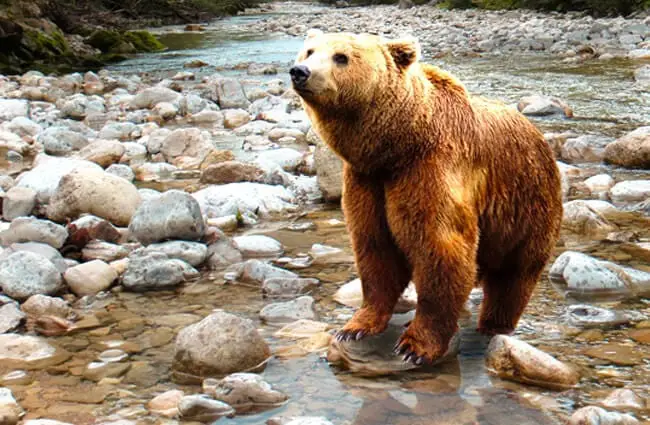
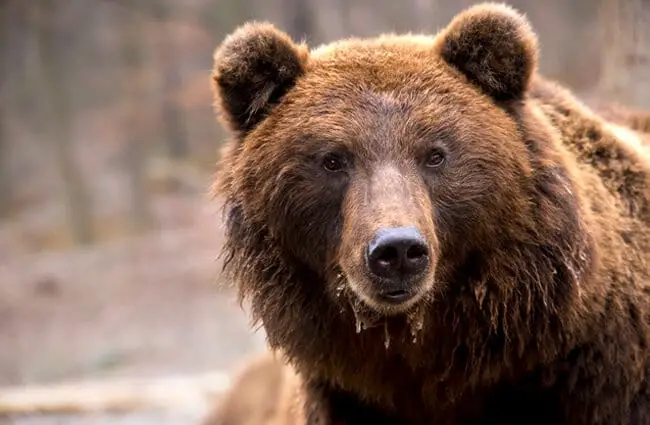

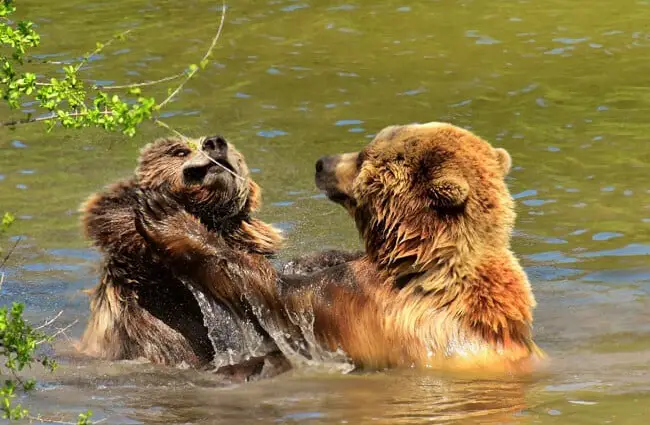
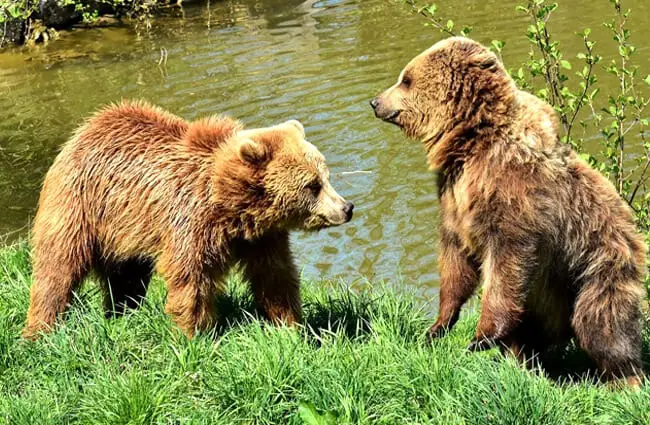

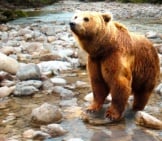


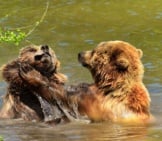
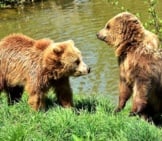
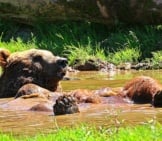
![Red Angus Closeup of a beautiful Red Angus cowPhoto by: U.S. Department of Agriculture [pubic domain]https://creativecommons.org/licenses/by/2.0/](https://animals.net/wp-content/uploads/2020/03/Red-Angus-4-238x178.jpg)












![Red Angus Closeup of a beautiful Red Angus cowPhoto by: U.S. Department of Agriculture [pubic domain]https://creativecommons.org/licenses/by/2.0/](https://animals.net/wp-content/uploads/2020/03/Red-Angus-4-100x75.jpg)

